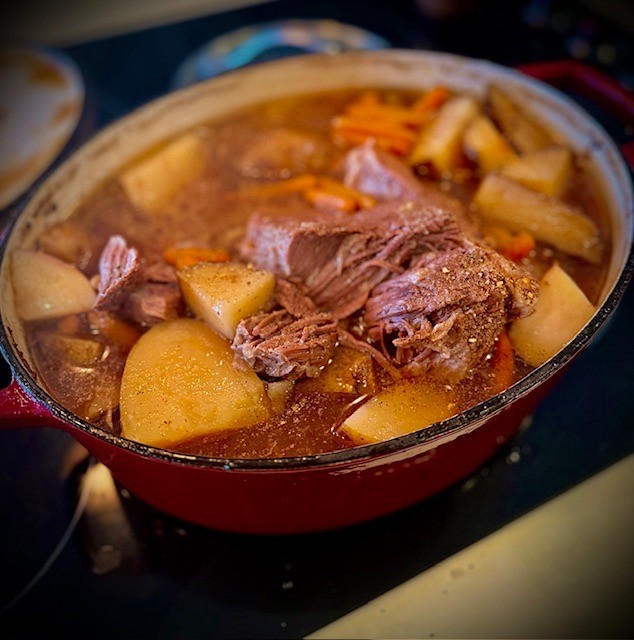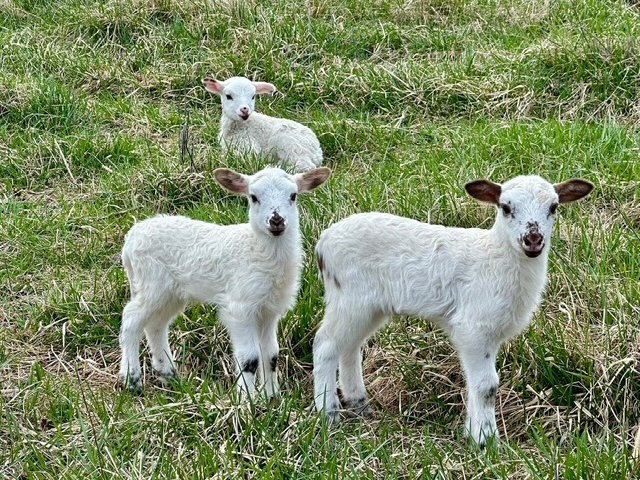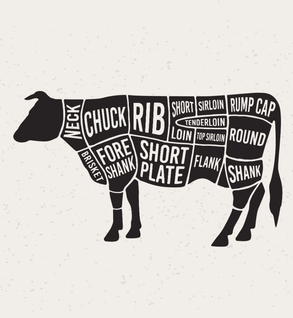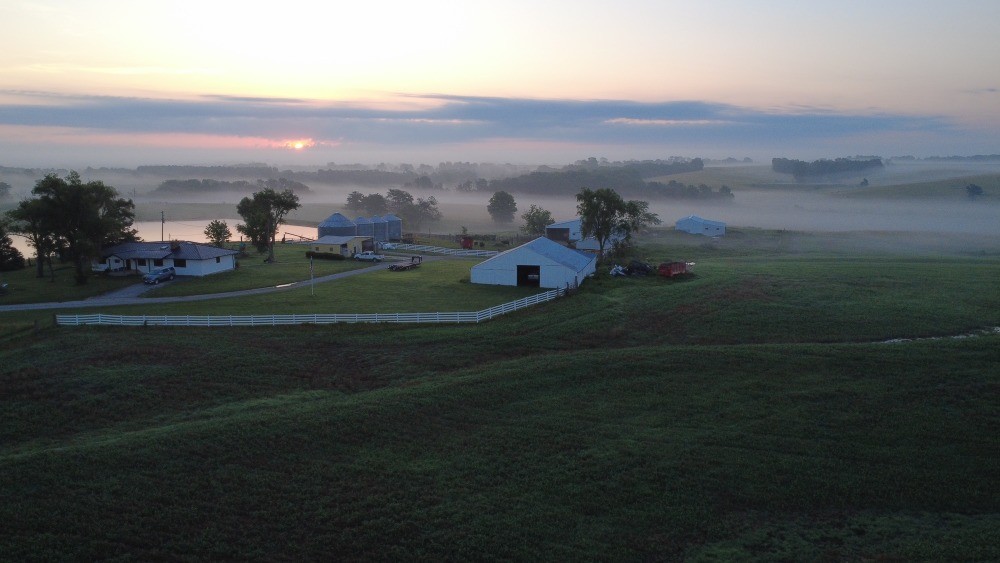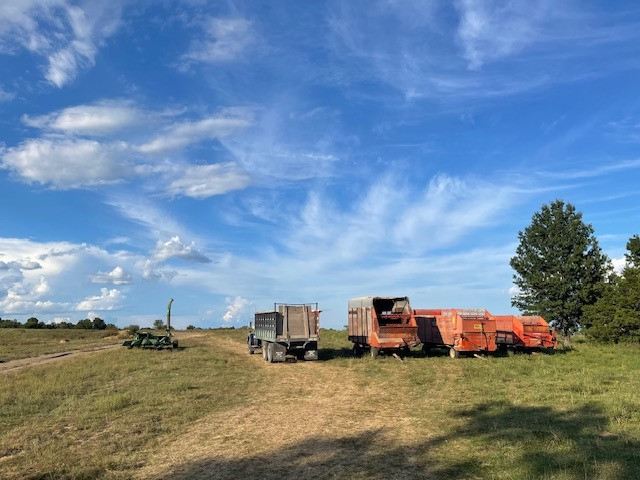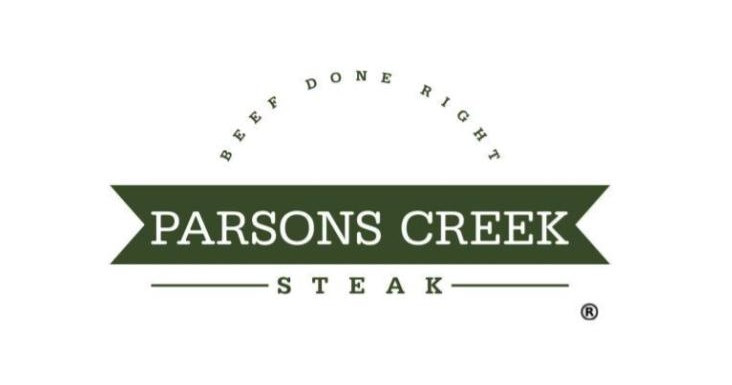The Parsons Creek family guide to an unforgettable Fourth of July BBQ
As the fifth generation to work this land, we've spent countless hours watching our Angus cattle graze these Missouri pastures, but some of my favorite moments happen around our family's grill every Fourth of July.
There's something magical about the Fourth of July in northern Missouri. The summer air carries the scent of fresh-cut grass from our pastures, and you can hear the distant sound of fireworks echoing across the rolling hills. For five generations, the Parsons Creek family has celebrated America's birthday the same way – surrounded by family, grateful for this land we call home, and gathered around a grill covered with the finest beef our pastures can provide.
Growing up on the farm, we learned that great beef isn't just about genetics or pasture management (though those matter plenty). It's about the memories you create when that beef brings people together. Whether it's my Uncle Jimmy teaching my cousins how to flip a burger without losing the juices or my Papa perfecting her brisket technique, every cookout is a chance to pass down something special.
This year, I want to share our family's definitive guide to creating an unforgettable holiday cookout. These aren't just recipes – they're traditions that have been tested around our table for generations. And at the heart of every single one is the premium beef that we've poured our lives into raising.
The Foundation: Our Kansas City BBQ Bundle (Sale running through the end of July)
When we put together our Kansas City BBQ Bundle, we weren't just thinking about variety – we were thinking about creating the perfect foundation for memories. With premium steaks, fresh ground beef for burgers, tender kabob meat, and slow-cooked brisket all in one package, you've got everything you need to turn your backyard into the kind of place where stories get told and traditions get made.
This bundle represents the best of what our pastures have to offer. These aren't just any cuts – they're made from cattle that have spent their entire lives grazing freely on our rolling pastures, under sunny skies, breathing fresh air. When you bite into any piece of our beef, you're tasting the difference that comes from generations of careful stewardship and a deep respect for both the land and the animals we raise.
Each cut has its own personality on the grill or smoker, from cattle whose bloodlines are as rich as ours. We know their lineage, we've watched them grow, and we've cared for them with the same attention we give our own family. When you serve Parsons Creek beef at your Fourth of July gathering, you're not just serving dinner – you're sharing a piece of our family's heritage with yours.
Recipe #1: Great-Grandma's "Never Fail" Burgers
From the Family Vault: My Great-Grandma always said the secret to a perfect burger wasn't in what you added – it was in what you didn't mess with. These burgers showcase exactly what makes our ground beef special – the rich, clean flavor that comes from cattle raised on open pasture.
Ingredients:
2 lbs Parsons Creek ground beef (from your KC BBQ Bundle)Coarse sea saltFresh cracked black pepperYour favorite burger fixings
Advice from Great Grandma:
Don't overthink it. Form loose patties, about ¾ inch thick. Make a small dimple in the center with your thumb – this prevents the dreaded burger dome. Our ground beef holds together beautifully because of the natural fat content from pasture-raised cattle.Season simply. Salt and pepper both sides just before they hit the grill. Grandma used to say, "The beef should taste like beef, not like a spice cabinet." When your beef is this good, simple is best.Hot and fast. Get your grill screaming hot. 4-5 minutes per side for medium. And here's the cardinal rule Grandma drilled into all of us: never, ever press down on the burger. You're just squeezing out all the good stuff – and with our premium beef, there's a lot of good stuff to lose.Let them rest. Just like a steak, let those burgers sit for 2-3 minutes before serving. This allows the juices to redistribute throughout the meat.Add Nanny Pat's home-grown homemade pickles, and you are in for the most amazing burger summer has to offer!
Family Tip: "If you want cheese, add it in the last minute of cooking and close the lid. Creates the perfect melt without overcooking the beef. And with beef this flavorful, you don't need much else."
Recipe #2: Papa’s Sunday Brisket (The Family Favorite)
The Story: Papa (my grandpa) has been making this brisket for every major family gathering for over twenty years. He always says the secret isn't in fancy techniques or complicated rubs – it's starting with brisket from cattle that lived their whole lives on open range and good grass. The marbling and flavor that comes from our pasture-raised beef make all the difference in creating something truly special for the people you love.
Ingredients:
1 whole Parsons Creek brisket (3-4 lbs from your bundle)2 tbsp brown sugar2 tbsp paprika1 tbsp garlic powder1 tbsp onion powder1 tbsp chili powder2 tsp salt1 tsp black pepper1 tsp cumin
Papa’s Method:
The night before: Mix all your dry ingredients. Coat that brisket like you mean it – every inch should be covered. The natural texture of our grass-fed beef holds seasoning beautifully. Wrap it in plastic and let it sleep in the fridge.Low and slow is the only way to go. 225°F on your smoker or grill. If you're using a gas grill, set it up for indirect heat and use a drip pan. Our brisket has the perfect fat content for long, slow cooking – it won't dry out like grain-fed beef can.Time is your friend. Plan for about 1.5 hours per pound. Yes, it's a commitment. Yes, it's worth it. The superior marbling in our beef means incredibly tender, flavorful results.The stall is real. Around 150°F internal temp, the meat will seem to stop cooking. Don't panic, don't turn up the heat. This is where the magic happens – and where the quality of your beef really shows.Know when to wrap. Once you hit 165°F internal, wrap in butcher paper (foil works too). This pushes through the stall and keeps things moist.Rest is not optional. When it hits 195-203°F internal, pull it off and let it rest in a cooler for at least an hour.
Family Tip: "Start your brisket at sunrise. That way, you're a hero by dinnertime, not scrambling at midnight. And with beef this good, people will remember this meal for years."
Recipe #3: Mom's Famous Steak Kabobs (The Crowd Pleaser)
Why We Love Them: Perfect for feeding a crowd, and everyone gets to customize their own stick. The kabob meat in our bundle is cut from premium steaks – it's not scraps or tough cuts. You'll taste the difference in every bite.
Ingredients:
2 lbs Parsons Creek kabob meat (pre-cut from your bundle)2 bell peppers (any color), cut in chunks1 large red onion, cut in chunks1 pint cherry tomatoes8 oz mushrooms, halved
Mom's Marinade:
½ cup olive oil¼ cup soy sauce2 tbsp Worcestershire3 cloves garlic, minced2 tbsp brown sugar1 tsp dried thyme
The Process:
Marinate like you mean it. Mix up that marinade and let the beef soak for at least 2 hours, up to overnight. Our tender, well-marbled beef doesn't need long marinades to be flavorful, but it does absorb flavors beautifully.Assembly matters. Thread beef and veggies alternating. Don't pack them tight – everything needs room to cook evenly. The uniform size of our kabob cuts ensures even cooking.Two-zone grilling. Start over direct heat for 2-3 minutes per side to get those grill marks, then move to indirect heat to finish cooking through.Internal temp is your guide. Pull them at 130°F for medium-rare, 140°F for medium. Premium beef like ours is best served medium-rare to medium to showcase its natural flavor and tenderness.
Family Tip from Nanny: "Soak your wooden skewers for at least 30 minutes. Nothing ruins a cookout like flaming kabob sticks. And don't be afraid to cook these medium-rare – the quality of our beef means it's safe and delicious."
Family-Tested Grilling Tips That Actually Matter
From Christian:
"Salt early, cook hot, rest always." These three rules will improve your grilling more than any fancy gadget. Salt draws out moisture initially, then draws it back in with flavor. High heat creates the crust everyone loves. And resting redistributes all those juices – especially important with premium beef like ours that has so much natural flavor to preserve.
From Papa:
"Your grill grates are seasoning tools." Clean them, oil them, and get them hot before anything touches them. A well-maintained grate will give you better flavor than any marinade. When you're working with beef this good, you want clean, pure flavors.
From Mom:
"Cook with your nose, not just your eyes." You can smell when proteins are developing that perfect crust. Trust your senses – they've been perfected over years of cooking. Premium beef smells different as it cooks – richer, more complex.
From Nanny:
"Room temperature meat is happy meat." Take your beef out of the fridge 30-45 minutes before grilling. Cold meat hitting a hot grill creates uneven cooking. This is especially important with high-quality beef, where you want even, perfect cooking throughout.
From Jordan (that's me):
"Invest in a good thermometer and use it." Guessing is gambling with good beef. Know your temps, nail your doneness every time. When you're cooking beef this premium, precision matters.
Creating Memories, One Meal at a Time
Here's what I've learned in my years on this ranch and around our family table: the best cookouts aren't remembered for perfect grill marks or competition-level grill lines. They're remembered for the stories shared while the brisket smoked, the laughter that erupted when someone's kabob fell through the grates, and the quiet satisfaction of watching four generations gathered around the same picnic table.
But here's the thing – When you start with beef that's been raised with care, handled with respect, and delivered with pride, you're creating the foundation for something special. There's a deep sense of tradition that comes from knowing where your food comes from and who raised it.
We've been farming and ranching for generations, preserving the land and fostering a sense of community here in northern Missouri. When you choose our Kansas City BBQ Bundle, you're not just buying beef – you're supporting a small family farm that's been rooted in northern Missouri soil for five generations. You're investing in sustainable farming practices that care for the land as much as the animals. And you're helping ensure that future generations will be able to experience the same connection to the land and the food it provides.
Our cattle are raised on pasture where they graze freely, with access to diverse grasses, fresh air, and blue skies. The taste of humanely and ethically raised beef – we are confident you will certainly taste the difference in every recipe in this guide.
This Fourth of July, don't just grill dinner. Create the kind of meal that becomes a memory, the kind of gathering that becomes a tradition, and the kind of experience that reminds everyone why coming together around great food is one of life's simple pleasures. When you serve Parsons Creek beef, you're not just feeding your family – you're creating moments that will be talked about and remembered for years to come.
From our pasture to your table, from our family traditions to yours – here's to a Fourth of July that tastes as good as it feels.
Ready to create some memories of your own? Check out our Parsons Creek Steak Stars and Stripes sale section. This is your ticket to becoming the grill master your family talks about for years to come. Because at the end of the day, that's what great food is really about – bringing people together and creating memories that last a lifetime.



